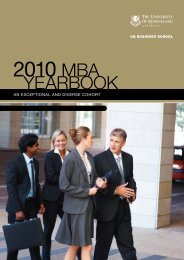Modelling the accruals process and assessing unexpected accruals*
Modelling the accruals process and assessing unexpected accruals*
Modelling the accruals process and assessing unexpected accruals*
You also want an ePaper? Increase the reach of your titles
YUMPU automatically turns print PDFs into web optimized ePapers that Google loves.
2 Direct <strong>and</strong> indirect method to calculate <strong>accruals</strong><br />
2.1 Accounting identity<br />
To calculate comprehensive <strong>accruals</strong> <strong>and</strong> <strong>the</strong>ir decomposition, I first specify <strong>the</strong> stock <strong>and</strong> flows<br />
clean-surplus relations (or accounting identity) for total working capital assets, non-current<br />
operating assets, <strong>and</strong> financial liabilities. I start by modifying <strong>the</strong> basic accounting identity<br />
Asset t =Liability t +Equity t to reflect operating <strong>and</strong> financing activities as (<strong>the</strong> firm j subscript is<br />
omitted from <strong>the</strong> modeling <strong>process</strong> in this paper till section 4)<br />
CASH NOA NFO CSE<br />
t t t<br />
t (1)<br />
where CASH t is cash on h<strong>and</strong>, NOA is non-cash net operating assets that consists of total<br />
working capital assets (TWC) which arise from day-to-day operating activities <strong>and</strong> non-current<br />
operating assets (NCO) which arise as a result of capital expenditures, NFO is non-cash net<br />
financial obligations or liabilities, <strong>and</strong> CSE is common shareholders equity.<br />
The clean surplus relations or identities of <strong>the</strong>se items are summarized in Table 1. These<br />
specifications are similar to those in Feltham <strong>and</strong> Ohlson (1995) <strong>and</strong> Penman (2009), who<br />
separate firms‟ activities into operating <strong>and</strong> financing. However, this paper fur<strong>the</strong>r separates<br />
operating activities into short-term operating activities that affect day-to-day working capital <strong>and</strong><br />
long-term operating activities that affect capital investment decisions.<br />
[Table 1 about here]<br />
7



